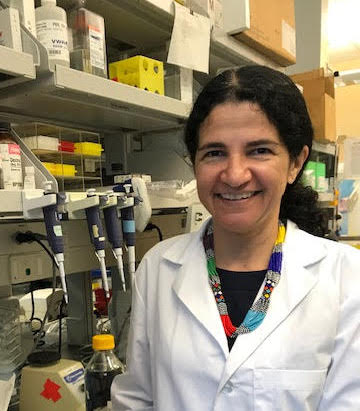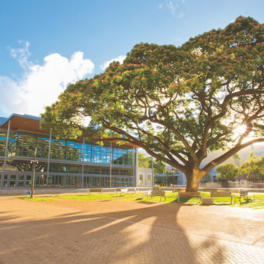New research at UH to fight obesity
 Lucia Seale. Credit: Kristen Ewell
Lucia Seale. Credit: Kristen EwellLucia Seale, researcher in SOEST’s Pacific Biosciences Research Center (PBRC), has been awarded a five-year grant of nearly $2 million from the National Institutes of Health (NIH) to investigate how specialized fat cells and the micronutrient selenium interact to produce body heat.
Born in Brazil, Seale didn’t experience cold weather until her mid-20s. In addition to her quest for warm clothing, the cold immediately led her to wonder: how do animals adapt to cold environments? It turns out that in mammals, specialized fat cells called brown adipocytes produce heat and help dissipate energy.
“Brown adipose tissue (BAT) in people is a hot target in obesity intervention,” said Seale. “After all, if energy expenditure is increased through activating brown adipocytes, weight loss should follow.”
Seale had previously discovered that the thyroid hormone-activating enzyme, type 2 deiodinase, one of a small number of selenium-containing proteins in animals, was necessary to activate heat production in BAT. For more than a decade, she has been studying selenium, a nutrient present in minuscule amounts in foods such as seafood and Brazil nuts, that acts as an antioxidant, preventing oxidative damage to crucial molecules in cells. After joining PBRC in January 2021, she turned her attention to the role of selenium in the BAT function.
“Identifying a selenoprotein that is crucial to heat production in BAT further inspired me to ponder how selenium, through its antioxidant properties and metabolism, regulates heat production in BAT when animals are exposed to cold,” said Seale.
Seale’s new R01 grant, considered the gold standard of NIH funding, was awarded to investigate this very question. Because brown adipocytes primarily participate in energy expenditure, her research may have profound implications in connecting our intake of selenium with responses of our brown fat cells that protect us from cold environments, and ultimately, help us avoid developing obesity.
Seale will conduct the research for this grant in collaboration with scientists at the UH Mānoa John A. Burns School of Medicine (JABSOM) and Beth Israel Deaconess Medical Center, in Boston.




